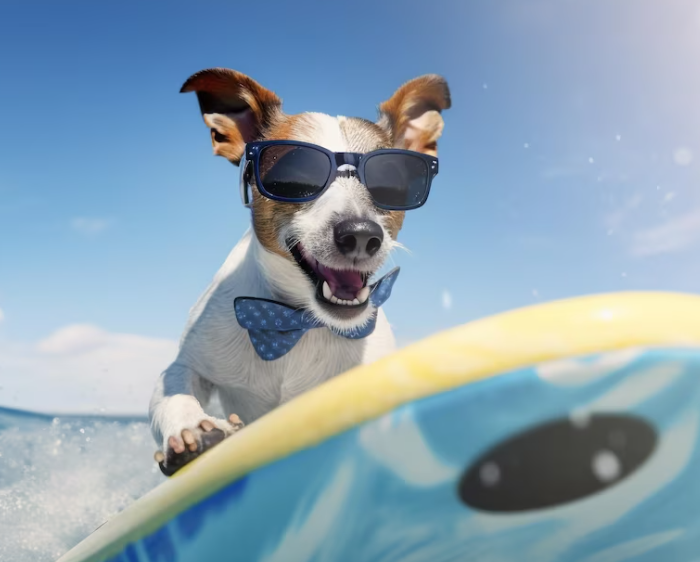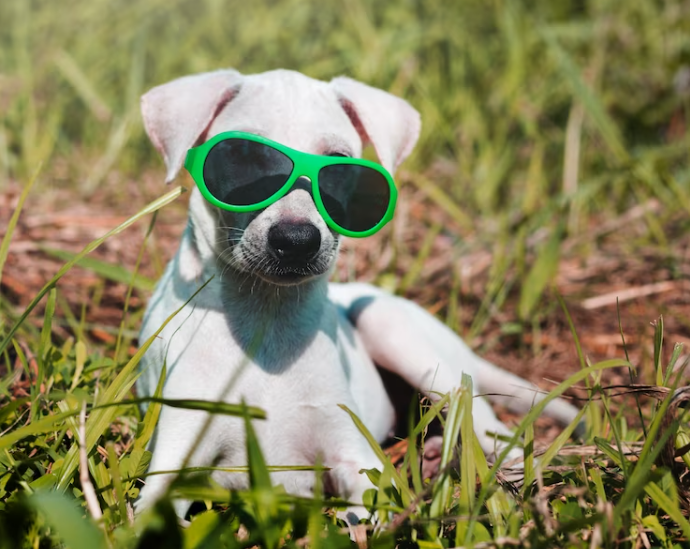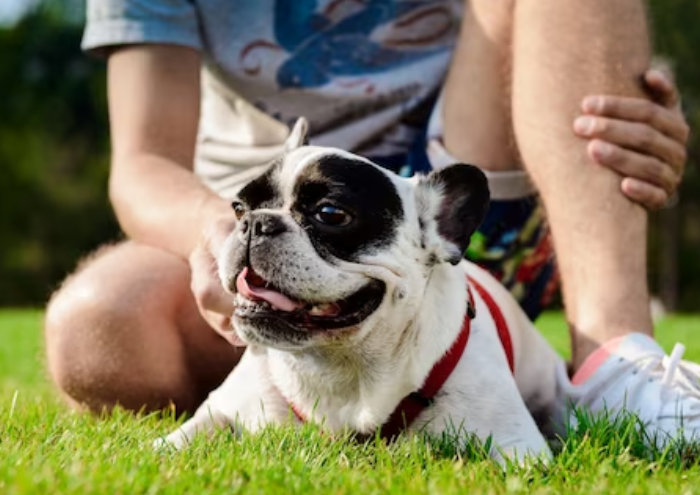2023-07-10
Imagine, that it is a hot summer day... In order for you to enjoy it, you are likely to take precautions against the high temperatures, i.e. put your sunglasses, suitable summer clothing on, and also put some sun lotion on your skin...etc.
Our paw friends require the same amount of care during the hot season as we do. Unfortunately, we tend to overlook our dogs’ needs in summer, which can lead to some serious issues. Today we will talk about our dogs and how to protect them from the high temperatures in summer.

Just like humans, our beloved paw friends are also exposed to the risk of having a heat stroke. Dogs are also not comfortable with high temperatures and can get dehydrated. Some breeds are more prone to heat strokes than others, e.g. breeds that weigh more than 110 lbs / 50 kg as well as short-muzzled breeds like the Pug, the Bulldog, and the Bullmastiff. The Chow Chow and the Bulldog are considered the two dog breeds, that are most prone to heat strokes. Heat strokes can lead to death in dogs, so you should take this risk seriously.
The risk of dehydration drastically increases in summer, which is why you and your dog should drink plenty of water (the recommended amount usually depends on the weight) to stay healthy and hydrated.
Pad Burn
Asphalt can get really hot in summer, which can seriously injure your paw friend’s paws and the pads in particular. You should avoid taking your dog for a walk on hot surfaces and also may want to test these yourself in advance, i.e. by touching the surface with a hand or a foot. If you can keep it for at least half a minute, then it should also be suitable for your dog to walk on that surface. If not-you should reconsider taking him/her there.
Symptoms of Health Issues Due to the High Temperatures
Symptoms that you should not overlook can include:
-Panting / Rapid breathing;
-Difficulties breathing;
-Unusual color of the tongue (too bright);
-Pale gums;
-Vomiting;
-Diarrhea;
-Disorientation;
-Loss of appetite;
-Fatigue;
-Drooling
-Lethargy / Depression;
-Blood in the stool;
-Thick saliva;
-High temperature (normal body temperature for dogs and cats is 101.0–102.5°F / 38.3–39.2°C);
-Dry mouth;
-Irregular heart rate;
-Sunken eyes;
-Decreased energy level.
If your dog shows any of the symptoms listed above, do not hesitate to call a veterinarian immediately. You should keep in mind that dogs can survive no longer than 48–72 hours without drinking water, so if your canine has not drunk any water within this time frame (do not wait longer than 24 hours), you should bring him/her to a vet as soon as possible.

There are some simple, but very helpful tips on how to ensure that your paw friend will feel comfortable and will stay healthy on the hot summer days.
Fresh Water
Ensure that your dog has access to fresh water throughout the day both at home and during your walks. Hence, you should not forget to take a bottle of water with you when you go out for a walk with your doggy.
Set an area at home for your pup where he/she can cool off. It should be shady, but you should make sure that it is not doughty, as your dog may get cold.
You can give your dog a cool bath or hose him/her to help him/her cool off. However, it is important that the temperature is not too low, as this can have a negative effect on your dog’s body, i.e. get in a shock, especially if there is a huge difference between the water temperature and the temperature outdoors. Make sure, that your paw friend’s eyes and ears are protected during bathing/hosing. Also, you should let the water stream gradually increase, in order for your pup to feel comfortable with it.
Consider using sun protection on your dog’s skin, especially if it is very sensitive. Do not use human sun lotions or sprays, but opt for sun protection that is specifically designed for dogs.
Your dog's nose is particularly susceptible to sunburn, especially if it is pink or lacks pigmentation. Apply a pet-safe sunscreen to their nose to protect it from harmful UV rays.
Dogs with upright or erect ears, such as certain breeds like the Dalmatian or the German Shepherd, have more exposed ear skin. It is recommended that you apply sunscreen to the outer surfaces of their ears to protect them against sunburn.
The belly and groin area are other body parts that need to be protected in the hot season. Dogs with light-colored or thinly-haired bellies are more likely to be sunburned in these areas. Apply sunscreen to their belly and groin area to protect their skin when they are lying down or are exposed to direct sunlight
Some dogs have a narrower and more exposed bridge of the snout, which can be prone to sunburn. Apply a thin layer of sunscreen to this area to protect it.
Always make sure to use sunscreen specifically designed for dogs and avoid products that contain ingredients that could be harmful to them. Additionally, you should consult with your veterinarian for recommendations on the best sunscreen and application techniques for your dog's specific needs.

As mentioned above, the temperature of the asphalt in summer can get really high, which can seriously injure your dog’s paws. You should choose routes that include grass areas or paths that are not paved.
Avoid Taking Walks at Noon
You should not take your dog out at noon when the temperatures in summer can be extremely high and dangerous for both humans and animals.
Some owners perceive dog boots as cute accessories, while others think of them as funny and unnecessary items for dogs. Regardless of the variety of opinions, these items can be very beneficial for your canine’s pads during the hot season.
If you notice that your dog’s paws are injured, you should consult a veterinarian, instead of binding them yourself (if you are not experienced). If moisture remains under the bind, it can cause infection.
You should not neglect your dog’s physical health of course, but during the hot season, you can reduce demanding physical exercise and opt for mentally stimulating games instead.